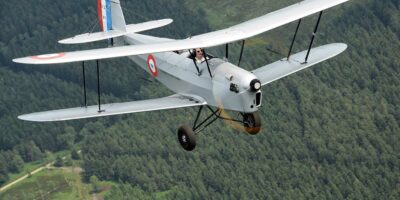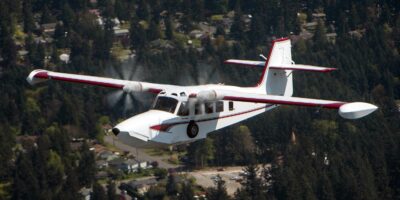Learning the skills to safely transport yourself through the air from one place to another requires sustained effort as well as overcoming obstacles – but the transformation is much more than new knowledge. The process shows you the world from a different perspective. Most importantly, it gives you an entirely new set of tools for evaluating novel situations while it imposes new responsibilities. Fundamentally, pilots must learn to see things for what they are – and they must avoid wishful thinking in their decision making.
Is your aeroplane airworthy? Are weather conditions suitable? Are cloud ceilings and visibility likely to rise or fall while you’re airborne? These kinds of questions demand clear-eyed answers based on verifiable, but not infallible information, not hope nor intuition. There are demonstrably right and wrong choices, and one person – you, the pilot in command – is ultimately responsible for all of them.
Pilots leave themselves an ‘out’ If headwinds aloft are stronger than anticipated, if the visibility as the destination drops, if electrical systems fail, or an engine loses power in flight, pilots have got to have contingency plans. And when back-up plans go awry, they must have the ability to develop new ones quickly and under pressure. It’s a tough discipline to master – but leaving yourself an ‘out’ can be both habit-forming and helpful in many non-flying activities, too.
“Ten thousand safe landings don’t guarantee the next one will be a success”
Pilots commit themselves Spend as much time as you like preparing, evaluating, and double checking. But eventually there’s an inflection point when pilots must commit to a take-off or abort – continue to a destination or divert, land or go-around. Those moments demand that pilots both decide, and then perform. These are binary choices – not shades of grey.
Pilots trust, and are trustworthy Pilots have a great deal of independence, but they must also trust. They trust their instruments to keep them oriented in the clouds and navigating to their destinations. They trust air traffic controllers for headings, altitudes, clearances, and to keep them clear of traffic and obstacles. They trust mechanics to be skilled, thorough, and diligent. And they trust each other to follow aviation regulations and communicate their positions clearly. In short, they must trust the entire aviation system – and the entire aviation system depends on them. It’s a package deal, and one can’t work without the other.
Flying is a meritocracy Becoming a pilot is a big step, but it only puts you at the bottom of an elaborate pyramid. Flying rewards continued education and achievement. More experience and advanced ratings are, for some, milestones in a lifelong aviation practice. But no matter how many certificates a pilot gets, no one ever completely masters the art and science of flying, and all pilots are fallible and prone to mistakes and oversights.
Ten thousand safe landings don’t guarantee the next one will be a success. Aeroplanes care nothing about pilot history or qualifications. Pilots must perform on every flight.
Pilots have a unique culture And part of that culture involves gallows humour. “Any landing you walk away from is a good one. Any landing in which the aeroplane is reusable is very good.”
These fatalistic laugh lines hint at aviation’s dark side. Its history is full of accidents and mishaps. But pilot humour is self-effacing, and if you look closely, there’s an inherent self-confidence and optimism in it. The jokes imply that, whatever difficulties pilots face in the air, we’ll deal with them on our own terms. And then we’ll laugh about them. What could be more hopeful than that?
A pilot’s perspective changes Flying is made up of hundreds of small skills. Many of them, like chandelles or lazy eights, can seem maddeningly difficult to learn. But once mastered, those skills become second nature, and you wonder why you ever struggled with them in the first place. Get used to that feeling because it repeats itself over and over throughout your aviation education.
Pilots learn to appreciate different aeroplanes Long ago I recall watching a Piper Comanche taxi by and making the comment to one of my fellow aerobatic pilots that it was a shame to waste a perfectly good Lycoming IO-540 engine on such a boring aircraft. That same powerful engine, we thought, could be put to such better use on a Pitts S-2B or a Harmon Rocket. But later, as I started doing more cross-country, I no longer regarded the Piper Comanche as a missed opportunity for a Lycoming engine. In fact, I came to admire the Comanche’s range, payload, and stability in the clouds.
Flying solo A pilot’s first solo flight is a milestone, no one who does it ever forgets. The dates and details of checkrides get hazy over time, but every aspect of soloing is memorable, and for good reason. Students are completely on their own in the air for the very first time, and the freedom is exhilarating. For some, the act of soloing – or earning a pilot’s certificate – creates confidence that spills over into other areas of their life. Even the most outlandish goals seem achievable. Nothing seems out of reach anymore.
RV-4 pilot, ATP/CFII, specialising in tailwheel and aerobatic instruction
[email protected]







